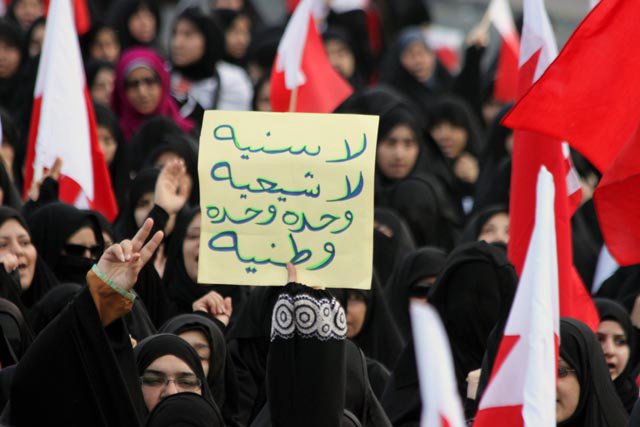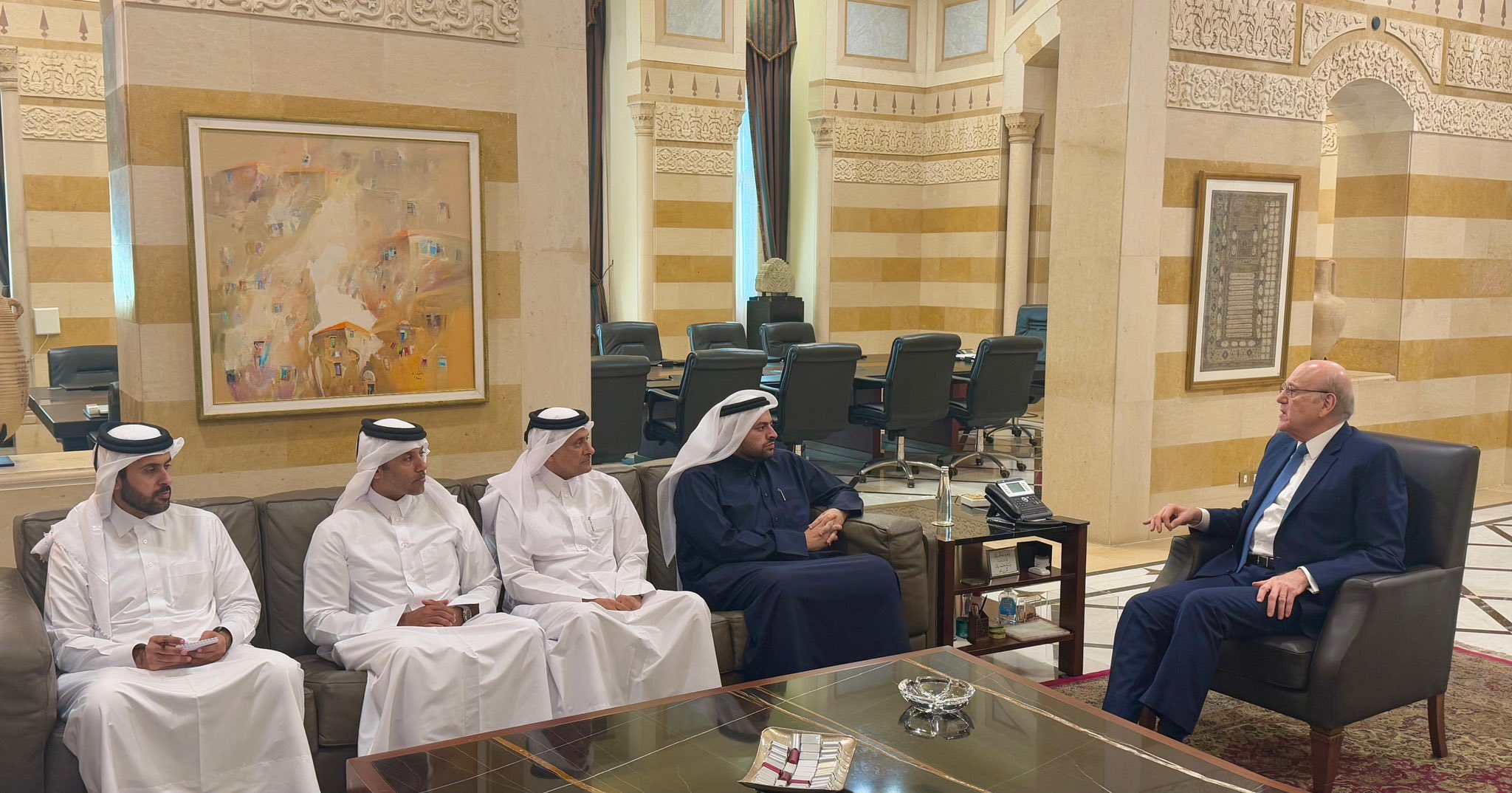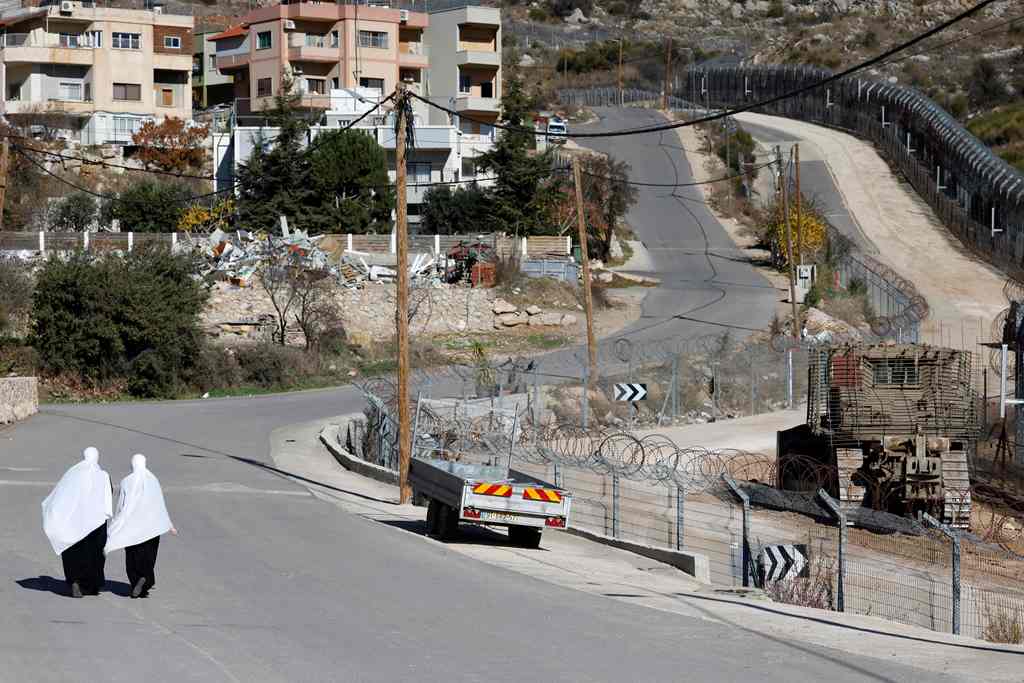A call for a national unity turned into sectarian clashes and backed by regional players has left Bahraini nationals feeling discredited, and stripped from their agency.
On 14 February 2011, the Arab Spring poured through the borders of Bahrain and witnessed the protests of thousands of Bahrainis in Manama, calling for effective democratic reforms.
Bahraini protestors camped close to the Pearl Roundabout on what became known as the “Day of Rage”, demanding a transformation of the country’s government into a constitutional monarchy—similar to Morocco—as well as an end to what rights groups have described as the systematic discrimination against the Shia community in Bahrain, a repetition of demands from the 1990s uprising for political liberalisation.
Torn between fear and hope, Yemenis in Qatar look back at the 2011 revolution
The Bahraini protests wanted to “end sectarian gerrymandering [that] artificially limits Shia representation”, and the intentional policies of naturalising Sunni Pakistanis in an attempt to increase the Sunni population in the country.
Upon returning to school after a long break due to the ongoing protests that were taking place in 2011, Maryam, who was 17 at the time, shares her earliest memory with Doha News, saying, “when we were back in school we would walk down the hall and what used to be a very integrated playground became a segregated one. You would find the people in support of the government on one side and the people who were against the government on the other.”
The fear of speaking out resided deeply within the students, as they found themselves amongst classmates who were pro-government, and who had made it their mission to report on anyone that spoke negatively of the Bahraini government, Maryam recounted.
“In the school hallways, we had people put up posters of the King’s son saying ‘whoever calls for the fall of the government, I call for a wall to fall over their head,’ and it was so sad to see that this was the reality of the government’s approach,” the now 28-year-old added.
Before 14 February, in an attempt to curb the protests which had started, the government offered a lip-seal amount of 1,000 Bahraini dinars to ordinary Bahraini families, which further aggravated protestors and contributed to the widespread demonstrations as they realised their voices were being traded with. Failing to maintain the monetary appeasement, the Bahraini government resorted to violence, killing two protestors in the process.
It was only then when Bahraini protestors began mobilising en masse, igniting the Bahrain uprisings in its fullest capacity, and prompted the largest social movement in the Arab Spring per capita as 200,000 out of a population of 600,000-700,000 (Bahraini nationals only) took their frustrations to the street.
Protestors were accused of wanting to set up an Iranian Republic ‘wilayat al-faqih‘ type government, which they denied, claiming instead to be calling for the redrafting of the constitution, and dissolving the government to transition to a ‘true’ constitutional monarchy.
Maryam described her experience on ground saying, “I didn’t actually go inside the protesting crowd. Instead I drove right next to them and parked [there]. I remember the chants saying “not Sunni nor Shia, just national unity” repeated in Arabic. It was so powerful and so beautiful to witness.”
“And that is how it started, it started as a national unity of people who wanted more and thought that they deserved more, and people who actually deserved more,” she said.
Bahrain and its regional allies
The Bahraini government painted the uprisings as manufactured by Iran, hinting that the regional power was meddling in internal Bahraini affairs by aiding the country’s Shia community to rebel against the Sunni ruling family.
The country’s monarchy suspected an Iranian-backed rebellion when a member of the opposition’s Al-Haq political party claimed that “Iran would intervene to back the Bahraini opposition if the Saudis intervened to support the ruling family” to a Lebanese newspaper. This narrative was further amplified by prominent Shia leader, Hassan Mushaima, and founder of Al-Haq political organisation, to an Iranian television station, Al-Alam.
On 14 March, 1,000 Saudi troops were deployed in Bahrain at the ruling family’s request upon the realisation that they could not yield to the protestors’ demands for reforms.
Bahrain’s King Hamad bin Isa Al Khalifa, then, requested the GCC’s Peninsula Shield Force, consisting primarily of Saudi and Emirati troops, to support the country’s security forces in arresting protestors and suspected organisers of the uprising as well as imprisoning and torturing “activists and political leaders […] including doctors, unionists, teachers and students.”
The crackdown by the government and their allies rendered Bahrain to have had the highest per capita arrests in the Arab Spring and the second highest extrajudicial killings, by March 2011.
Al-Jazeera coverage
As the Arab Spring worked its way from North Africa through to the Levant, Al-Jazeera remained somewhat impartial to the Bahraini uprising which was a stark contrast to their coverage of the protests in Tunisia, Egypt, Libya and later Syria. The Washington Post described their coverage as “sporadic and markedly neutral”.
However, in a post-Saudi-led blockade on Qatar atmosphere, Al-Jazeera aired an episode titled “Playing with Fire” under their “What is Hidden is Greater” programme on July 2019, which investigated a secret plan managed by the Bahraini intelligence in 2003 with leaders recruited from Al-Qaeda that aimed at assassinating prominent Shia opposition figures.
The episode discussed the Bahraini government’s policy of ‘divide and rule’ through which sectarian sentiments were used to suppress opposition groups and prevent any unifying within national movements.
Bahrain post 2011 uprisings
“The struggle hasn’t ended. We’re talking about a revolution that has taken 11 years now to continue and people are going to be protesting, people are going to be out on the streets but we won’t hear about it,” Maryam, who is currently living in Qatar, explains.
Upon searching for a single proud moment to hold on to, Maryam tells Doha News that the only time she will be able to claim pride of her national identity, is when Bahrainis will be able to speak out in the open about what is happening, and how they still strive for change and hope in their country.
“If we are able to talk about Bahrainis going [to] the streets, if we’re able to talk about unemployed Bahrainis who are facing consistent issues continuously. [If we’re able to talk about] women’s issues and in general women’s testimonies; the fact that courts divide between Sunni and Shia women and differentiate between their treatment and the outcome of cases. Even if they were super identical, [the results] for Shia women will be different than that of a Sunni woman,” she expressed.
Noting finally that — “to go beyond this rhetoric of sectarianism,” and restoring the sense of national unity as per the chants in the 2011 protests —that, according to Maryam, would be a moment worth being proud of, as a Bahraini.
_______________________________________________________________________
Follow Doha News on Twitter, Instagram, Facebook and Youtube







